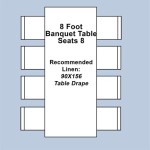Understanding Laminate Flooring and Joist Span Tables
Laminate flooring has become a popular choice for homeowners due to its durability, affordability, and aesthetic versatility. Its installation, however, is intrinsically linked to the structural integrity of the subfloor, particularly the floor joists. Floor joists serve as the supporting framework beneath the subfloor, and their spacing and span play a crucial role in preventing deflection and ensuring a level, stable surface for the laminate flooring. Understanding and utilizing laminate floor joist span tables is paramount for a successful and long-lasting flooring installation.
A floor joist span table provides maximum allowable spans for different sizes and grades of lumber used as floor joists, based on the load they are expected to bear. These tables are derived from engineering calculations that consider factors such as the species and grade of wood, the joist spacing, and the anticipated live and dead loads. Incorrect joist spacing or span can lead to sagging floors, structural instability, and premature failure of the laminate flooring. Therefore, proper planning and adherence to span table guidelines are essential during the design and construction phase.
The key concept underlying the use of span tables is the relationship between the joist's ability to resist bending (flexural strength) and the load applied to it. The longer the span, the greater the bending moment induced by the load. Consequently, longer spans require larger or stronger joists to maintain the necessary stiffness and strength. The allowable span is also affected by the spacing between the joists. Closer spacing allows for a shorter effective span for each individual joist, increasing the overall load-bearing capacity of the floor system.
Factors Influencing Joist Span
Several factors influence the allowable span for floor joists. These factors must be carefully considered when selecting the appropriate joist size and spacing for a given application. Ignoring these considerations can lead to inadequate support and potential structural problems.
Wood Species and Grade: The species of wood used for the joists significantly impacts its strength and stiffness. Different wood species have varying densities and fiber structures, which directly affect their load-bearing capacity. For example, Douglas Fir and Southern Yellow Pine are commonly used for floor joists due to their high strength-to-weight ratio. The grade of the lumber also plays a crucial role. Higher grades, such as Select Structural or No. 1, indicate fewer knots and other imperfections, resulting in greater strength and reliability. Span tables typically specify allowable spans for different wood species and grades.
Joist Spacing: The distance between adjacent joists directly influences the load distribution across the floor system. Closer spacing distributes the load more evenly, reducing the bending stress on each individual joist. Common joist spacings are 12 inches, 16 inches, and 24 inches on center (O.C.). Smaller spacing generally allows for longer spans, given the same joist size and wood species. However, using closer spacing also increases the overall cost and material requirements. The choice of joist spacing should be carefully balanced against the desired span and the overall budget for the flooring project.
Load Considerations: The load applied to the floor is a critical factor in determining the allowable joist span. Loads are generally categorized as dead loads and live loads. Dead loads consist of the weight of the building materials themselves, including the subfloor, flooring, finishes, and any permanent fixtures. Live loads represent the weight of occupants, furniture, and other movable objects. Building codes specify minimum live load requirements for different types of occupancies. Residential floors typically have a minimum live load requirement of 40 pounds per square foot (psf). Areas with heavier anticipated loads, such as bathrooms or kitchens, may require higher live load capacities. Span tables are typically based on specific load assumptions, and it is essential to select a table that corresponds to the anticipated load conditions.
Understanding and Interpreting Span Tables
Span tables are presented in a tabular format, with the allowable span listed for different joist sizes, spacing, wood species, and grades. These tables are typically found in building codes, engineering design manuals, and manufacturers' literature. Properly interpreting and applying these tables is crucial for ensuring the structural integrity of the floor system.
Identifying Relevant Parameters: Before consulting a span table, it is necessary to determine the relevant parameters for the specific application. This includes identifying the wood species and grade, the joist size (e.g., 2x8, 2x10), the joist spacing (e.g., 16 inches O.C., 24 inches O.C.), and the anticipated live load. These parameters will determine which row and column of the span table are relevant.
Locating the Allowable Span: Once the relevant parameters have been identified, the allowable span can be located at the intersection of the corresponding row and column in the span table. The allowable span is typically expressed in feet and inches. It represents the maximum permissible distance between supports for the given joist size, spacing, wood species, grade, and load conditions.
Applying Adjustment Factors: In some cases, adjustment factors may need to be applied to the allowable span listed in the table. These adjustment factors may be necessary to account for specific conditions, such as increased moisture content, fire-retardant treatment, or repetitive member use. Building codes typically provide guidance on when and how to apply these adjustment factors. For instance, if the lumber is used in a damp environment, a reduction factor may need to be applied to account for the reduced strength of the wood.
Practical Considerations for Laminate Flooring Installation
While span tables provide the theoretical maximum allowable spans, several practical considerations should be taken into account during laminate flooring installation. These considerations can further enhance the stability and longevity of the flooring.
Subfloor Preparation: A level and stable subfloor is essential for a successful laminate flooring installation. Any irregularities or imperfections in the subfloor can cause the laminate planks to flex or creak, leading to premature wear and tear. Before installing the laminate flooring, the subfloor should be thoroughly inspected and any necessary repairs should be made. This may involve patching cracks, filling holes, or leveling uneven areas. A self-leveling compound can be used to create a perfectly smooth and level surface. The type of subfloor material (e.g., plywood, OSB) should also be compatible with the chosen laminate flooring product.
Underlayment Selection: An underlayment is typically installed between the subfloor and the laminate flooring. The underlayment provides cushioning, reduces noise transmission, and helps to protect the laminate flooring from moisture. The selection of the appropriate underlayment depends on factors such as the type of subfloor, the desired level of sound insulation, and the presence of a radiant heating system. Some laminate flooring products come with an attached underlayment, while others require a separate underlayment to be installed.
Acclimation of Laminate Flooring: Laminate flooring should be acclimated to the room's temperature and humidity levels for a period of time before installation. This allows the planks to expand or contract, minimizing the risk of gaps or buckling after installation. The manufacturer's instructions typically specify the recommended acclimation period, which can range from 48 to 72 hours. During acclimation, the laminate flooring should be stored in the unopened boxes in the room where it will be installed.
In summary, utilizing laminate floor joist span tables is an important aspect of ensuring the structural integrity and longevity of laminate flooring. Considering factors impacting joist span, understanding and interpreting the tables, and noting the practical considerations for laminate flooring installation are critical steps in the process. This knowledge contributes to a stable and durable flooring system.

Engineered Floor Joist Span Specifications Ehow

Span Tables Factsheet Wood Campus

Span Tables Factsheet Wood Campus

Span Tables Factsheet Wood Campus

Span Tables Design Values For Joists Rafters Headers Beams Girders

Engineered Floor Joists Vs 2x10 Lumber Compared Mellowpine
Glulam Beam Span Tables And Strength Grades

What Is A Floor Joist 16 Common Questions Answered Complete Building Solutions

Deck Joist Spacing And Span Chart Decksdirect

2024 International Residential Code Irc Icc Digital Codes








